
The Salt march, also known as the Salt Satyagraha, Dandi March, and the Dandi Satyagraha, was an act of nonviolent civil disobedience in colonial India, led by Mahatma Gandhi. The 24-day march lasted from 12 March 1930 to 6 April 1930 as a direct action campaign of tax resistance and nonviolent protest against the British salt monopoly. Another reason for this march was that the Civil Disobedience Movement needed a strong inauguration that would inspire more people to follow Gandhi's example. Gandhi started this march with 78 of his trusted volunteers. The march spanned 387 kilometres (240 mi), from Sabarmati Ashram to Dandi, which was called Navsari at that time. Growing numbers of Indians joined them along the way. When Gandhi broke the British Raj salt laws at 8:30 am on 6 April 1930, it sparked large-scale acts of civil disobedience against the salt laws by millions of Indians.
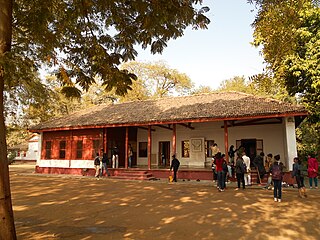
Sabarmati Ashram is located in the Sabarmati suburb of Ahmedabad, Gujarat, adjoining the Ashram Road, on the banks of the River Sabarmati, 4 miles (6.4 km) from the town hall. This was one of the many residences of Mahatma Gandhi who lived at Sabarmati (Gujarat) and Sevagram when he was not travelling across India or in prison. He lived in Sabarmati or Wardha for a total of twelve years with his wife Kasturba Gandhi and followers, including Vinoba Bhave. The Bhagavad Gita was recited here daily as part of the Ashram schedule.
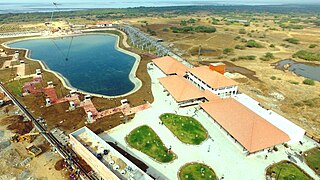
Dandi is a village in the Jalalpore taluka, Navsari District, Gujarat, India. It is located on the coast of the Arabian Sea near the city of Navsari.

Kaba Gandhi No Delo is a house and a museum in Rajkot, Gujarat, India. It was Indian independence leader Mahatma Gandhi's primary family home from 1881 to 1915. It is built in the traditional Saurashtrian architectural style and houses a permanent pictorial exhibition called Gandhi Smriti.

Ravishankar Vyas, better known as Ravishankar Maharaj, was an Indian independence activist, social worker and Gandhian from Gujarat.

Kochrab Ashram, also known as Satyagraha Ashram, is a historic site and museum in Ahmedabad, Gujarat, India. The ashram was the founded in May 1915 by Mahatma Gandhi, leader of the Indian independence movement. For the next two years he lived in the ashram with several other members of the movement. Some of his Gandhian ideas were conceived during that time. In 1953 the Bombay State named the ashram a memorial and tendered it to the Gujarat Vidyapith a year later. Its renovation and redevelopment into a museum were completed in 2024.
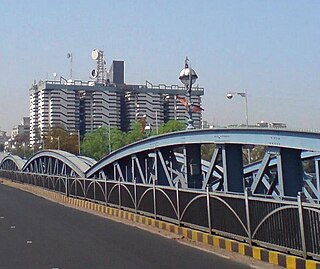
The Ellis Bridge is a century-old bridge in Ahmedabad, Gujarat. It bridges the western and eastern parts of the city across the Sabarmati river. This bowstring arch truss bridge was the first bridge in Ahmedabad, constructed in 1892. Concrete wings were added on either side in 1997 and it was renamed the Swami Vivekananda Bridge.
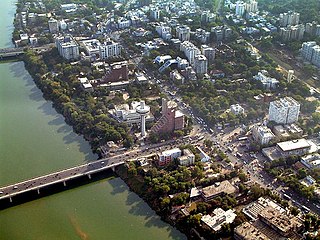
Ahmedabad is located on the banks of the River Sabarmati in the northern part of Gujarat and the western part of India. It is located at 23.03°N 72.58°E spanning an area of 550 km2. The average elevation is 53 metres.

Manibhai Bhimbhai Desai was an Indian social activist, associate of Mahatma Gandhi, and a pioneer of rural development.

J. C. Kumarappa was an Indian economist and a close associate of Mahatma Gandhi. A pioneer of rural economic development theories, Kumarappa is credited for developing economic theories based on Gandhism – a school of economic thought he coined "Gandhian economics."
Titusji was one of the 78 marchers selected by Mahatma Gandhi to take part in the 1930 Dandi March, to break the salt law. He served as governing secretary for Gandhi's Sabarmati Ashram milk project near Ahmedabad. Gulzarilal Nanda, who later became Prime Minister of India, was the secretary of another unit. Both of them were trusted friends of Gandhi. His given name was Titus Theverthundiyil, while "Titusji" was the honorific given to him by Mahatma Gandhi.
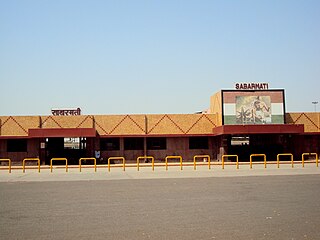
Sabarmati Junction railway station is a junction station of the Indian Western Railway in Ahmedabad, Gujarat. The station is six kilometres (3.7 mi) from the main Ahmedabad Junction railway station on the Ahmedabad–Delhi main line, at Dharamnagar near the Sabarmati Ashram. Sabarmati Junction has 2 tracks, the Mehsana line, and the Botad line, in addition to the main broad-gauge line for trains departing from Ahmedabad. The station has a dedicated rail yard for passenger trains, and was proposed in 2010 for development as an additional terminal for Delhi-bound trains.
Kapletha is a village in Surat district in Gujarat, India. Situated approximately 21 kilometres (13 mi) south of Surat, the village population is approximately 2500. It has a very large Islamic university known as Jamiatul Qirat. Also, there is the river Mindhora which flows from the outer side of village. There are many brick factories around the village. Most of the villagers are in abroad mainly in the United Kingdom, the United States, Canada, South Africa, New Zealand, and Barbados Panama. The villagers' main occupation is farming. There is a small pond in the heart of village and also there is a restaurant named Sigdi on main Surat-Navsari road in Kapletha. Mahatma Gandhi, during his Dandi march journey, visited this village and crossed the river Mindhora. During that period there was no bridge over the river, so the villagers made a bridge with bullock cart and Mahatma Gandhi crossed the river and continued his journey towards Dandi. In this village, most people have Patel as their last name, also there are DEGIA, Aswat, Pandor, Chichwadiya, Sacha, Harpati, Dhimmar, Raja, Ukadia etc.

Mahatma Mandir is a convention and exhibition centre located at sector 13 C in Gandhinagar, Gujarat, India. It is inspired by the life and philosophy of Mahatma Gandhi. It is one of the biggest convention centres in India, spread over an area of 34 acres. It was developed by the Government of Gujarat. Business summits like Vibrant Gujarat Global Investor Summit 2011, 2013, 2015, 2017 and 2019 were organised here.

The Vedaranyam March was a framework of the nonviolent civil disobedience movement in British India. Modeled on the lines of Dandi March, which was led by Mahatma Gandhi on the western coast of India the month before, it was organised to protest the salt tax imposed by the British Raj in the colonial India.
Kanu Desai, born Kanhaiyalal Hukumatrai Desai, was an Indian artist and art director. He contributed to decorative art, drew and designed sets for films, and illustrated several books written by Mahatma Gandhi.
Daskroi is one of the 182 Legislative Assembly constituencies of Gujarat state in India. It is part of Ahmedabad district.

Dandi Beach is one of the prominent beaches located in Dandi village, Gujarat, India. Dandi beach is one of the cleanest beaches in the Arabian Sea. Dandi Beach is historically prominent as Mahatma Gandhi led the salt sathyagraha from Sabarmati Ashram (Ahmedabad) to Dandi. This is the beach where Mahatma Gandhi broke the salt tax law of the British after the Salt March.
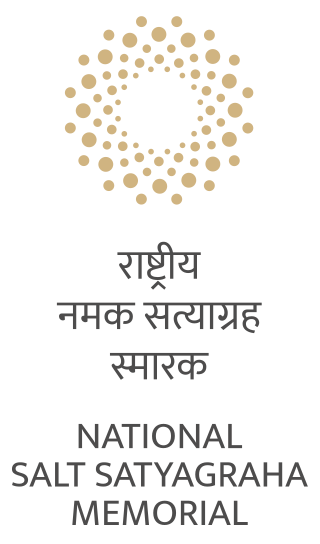
The National Salt Satyagraha Memorial or Dandi Memorial is a memorial in Dandi, Gujarat, India, that honors the activists and participants of the Salt Satyagraha, an act of nonviolent civil disobedience in colonial India which was led by Mahatma Gandhi in 1930. The memorial is spread over a 15 acres (61,000 m2) and is located in the coastal town of Dandi, where the Salt March ended on 5 April 1930 and the British salt monopoly was broken by producing salt by boiling sea water. The project was developed at an estimated cost of ₹89 crore (US$11 million).
Gandhi Smriti railway station is a small railway station on the Western Railway network in the state of Gujarat, India. Gandhi Smriti railway station is 3 km away from Navsari railway station. Passenger and MEMU trains halt here.

















